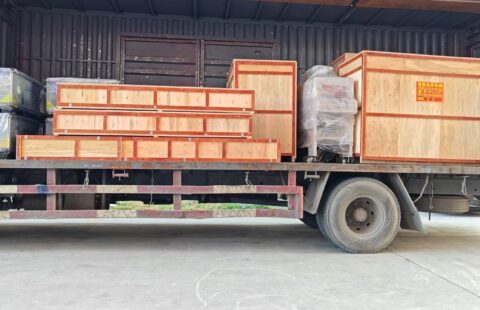
How to Choose a Packaging Machine? A Comprehensive Guide for Efficient Decision-Making
In the fast-paced modern industrial landscape, packaging machines have become core equipment for enhancing efficiency and reducing costs. Whether in the food, daily chemicals, pharmaceutical, or electronics industries, selecting the right packaging machine directly impacts production line fluency and product competitiveness. However, faced with a dazzling array of models and technical parameters in the market, how can you accurately match your needs? This guide will walk you through machine types, key selection criteria, and pitfall-avoidance strategies to empower your decision-making.
1. Clarify Needs: Start with Basic Categories
Before purchasing a packaging machine, first understand common types and their applications:
-
By Packaging Format
- Vertical Packaging Machine: Ideal for granules, powders, and liquids (e.g., seasonings, instant coffee), integrating vertical bag forming, filling, and sealing.
- Pillow Packaging Machine: Best for block or strip-shaped products (e.g., biscuits, ice cream), wrapping items in film to create pillow-shaped packages.
- Vacuum Packaging Machine: Suitable for perishable foods requiring extended shelf life (e.g., meat, seafood), inhibiting bacterial growth by removing air.
- Shrink Packaging Machine: Uses heat-shrink film to bundle products (e.g., beverage multipacks), enhancing visual consistency.
-
By Automation Level
- Semi-Automatic: Requires manual loading/unloading, ideal for small-batch, multi-variety production (e.g., startups).
- Fully Automatic: Integrated with conveyors and inspection systems, suited for large-scale single-category production (e.g., large food factories).
2. Core Selection Criteria: Align with Production Demands
1. Capacity & Efficiency
- Speed: Choose based on hourly output (e.g., 1,000 packages/hour) to avoid “over-specification” or “underperformance.”
- Flexibility: Does the machine support multiple packaging formats (e.g., bag types, sizes)? How quick is mold switching?
2. Product-Specific Adaptability
- Material State: Liquids require leak-proof designs, powders need dust suppression, and fragile items demand cushioning features.
- Packaging Materials: Ensure compatibility with materials like aluminum foil, composite films, or PE film to prevent sealing failures or waste.
3. Technical Deep Dive
- Precision Control: Weighing errors should be ≤±1% (e.g.,奶粉奶粉 filling), while temperature fluctuations during sealing affect product quality.
- Energy Efficiency: Prioritize models with low power/air consumption (e.g., servo motor-driven systems).
3. Avoid Hidden Pitfalls: Critical Considerations
1. Supplier Credentials & Track Record
- Verify CE, ISO certifications and request industry-specific case studies (e.g., dairy industry projects).
- Beware of “white-label” traps—visit factories to inspect machining accuracy and assembly quality.
2. After-Sales Support & Costs
- Response Time: Is there 24/7 technical support? Are spare parts readily available?
- Hidden Costs: Calculate long-term expenses for consumables (e.g., film, ink). Low upfront costs may hide higher lifetime costs.
3. Future-Proofing
- Smart Connectivity: Does the machine offer IoT or MES system interfaces for digital upgrades?
- Modular Design: Can you easily add functions like coding or vision inspection in the future?
4. Pro Tips: Streamline Communication & Testing
- Sample Trials: Request on-site testing with your actual products to check sealing strength and consistency.
- Contract Details: Clarify delivery timelines, training scope, and warranty terms (e.g., 3-year core component coverage). Avoid verbal promises.
- Industry Reputation: Research brands via trade associations or peer groups, focusing on failure rates and service quality.
5. Conclusion: Invest Wisely, Plan for the Long Term
A high-quality packaging machine is not just a tool but a strategic partner in cost reduction and efficiency gains. By following the needs analysis → technical comparison → on-site validation → service evaluation framework, you’ll minimize procurement risks. Remember: The best choice is the right fit—prioritize cost-effective, reliable solutions tailored to your production needs over blindly pursuing high-end specs.




